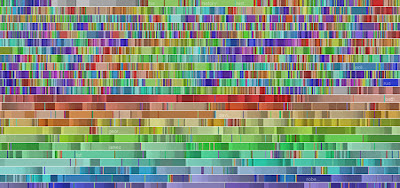In the online article by Inc. Magazine called "Business Opportunities in Big Data", it is stated that Big Data is hot because:
"In an increasingly digitized world, everything you do creates an electronic record—every purchase, doctor's visit, or instance you "friend" someone on Facebook. As organizations continue to amass hundreds of terabytes of that information, they are looking for more sophisticated software tools to mine and analyze it, to help businesses better understand their markets and customers, and even predict what's next."
It is clear that if Big Data is a market, then our digitized actions are treated as commodities. Information sourced from our own digital actions are being used or sold to governmental or commercial entities but we're also buying it ourselves (let's say you're paying Linkedin to access more and better information about the state of your professional online relationships).
As technology always evolve in an experimental phase, we also follow by jumping into those new developments, until it comes a time to assess and make meaning of that technology and our relationship with it. In the Big Data context, now that the movement is going mainstream and it is big enough to become a market, it is time (again) to revise the meaning of individual freedom and autonomy. The only thing we have freedom for in this world is to decide what we want to think about our individual position in relation with the technologies we evolve with. When it comes to our bodies and actions, we've always been subjected to our connection with other entities and technologies. In fact, we are "in connection".
For me, the notion of the market of Big Data is just another technical way of visualizing and administering the connections and relationships that make the world, those that of course existed even when the previously analog materiality of media didn't allow us to recognize (although we've always felt them). As there is another way of seeing what has always been happening, the time has come to revise how we want to think about ourselves in this new media context, to ask ourselves if we are willing to understand our identities in function to the state of the media through which they actualize. Either you fight the Big Data movement and the challenges it supposedly represents to our identities and privacy or you consciously choose to attune to it by understanding that it could be just another stage in the history of our bio-technical evolution.
Of course, we may not be free from the constraints of media forms that shape our social life but we can be critical about the direction that is taking, and that freedom should be non negotiable. Change can only come from within.
Image credits: Inc. Magazine and Viegas/Wikipedia



